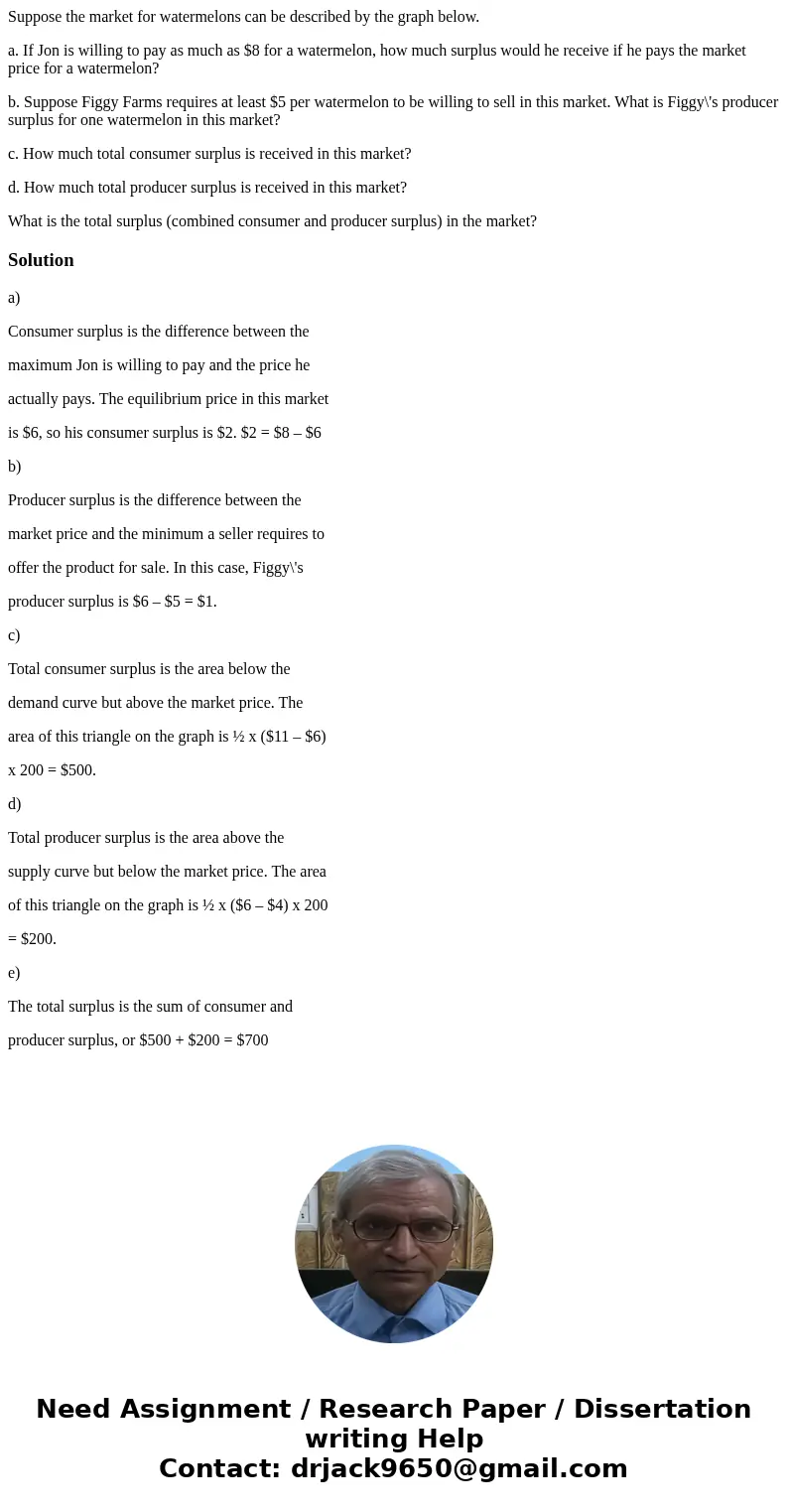Suppose the market for watermelons can be described by the g
Suppose the market for watermelons can be described by the graph below.
a. If Jon is willing to pay as much as $8 for a watermelon, how much surplus would he receive if he pays the market price for a watermelon?
b. Suppose Figgy Farms requires at least $5 per watermelon to be willing to sell in this market. What is Figgy\'s producer surplus for one watermelon in this market?
c. How much total consumer surplus is received in this market?
d. How much total producer surplus is received in this market?
What is the total surplus (combined consumer and producer surplus) in the market?
Solution
a)
Consumer surplus is the difference between the
maximum Jon is willing to pay and the price he
actually pays. The equilibrium price in this market
is $6, so his consumer surplus is $2. $2 = $8 – $6
b)
Producer surplus is the difference between the
market price and the minimum a seller requires to
offer the product for sale. In this case, Figgy\'s
producer surplus is $6 – $5 = $1.
c)
Total consumer surplus is the area below the
demand curve but above the market price. The
area of this triangle on the graph is ½ x ($11 – $6)
x 200 = $500.
d)
Total producer surplus is the area above the
supply curve but below the market price. The area
of this triangle on the graph is ½ x ($6 – $4) x 200
= $200.
e)
The total surplus is the sum of consumer and
producer surplus, or $500 + $200 = $700

 Homework Sourse
Homework Sourse